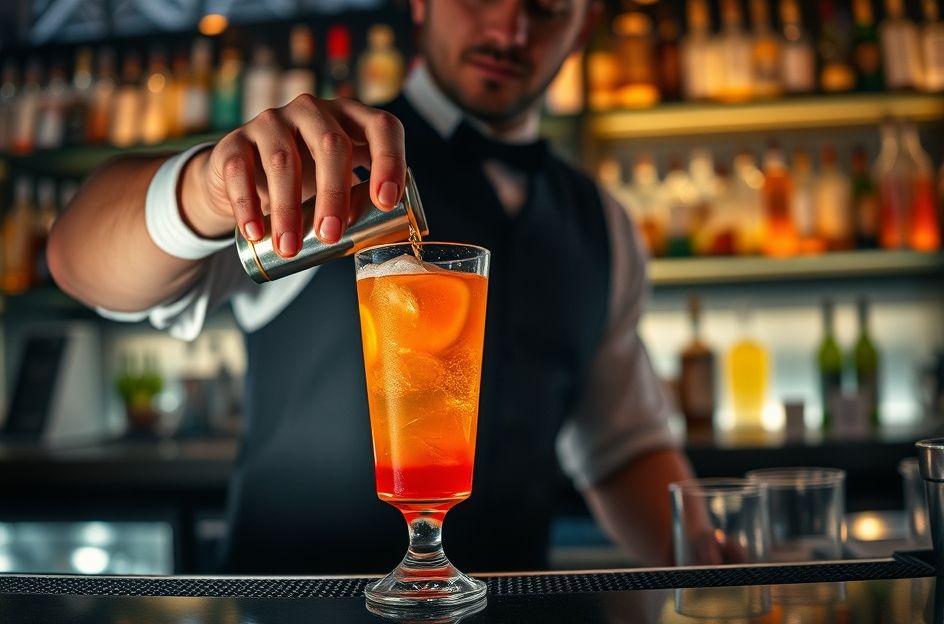Bartending involves essential techniques like shaking, stirring, and straining to create perfect cocktails. Drinks that only require shaking are mixed directly in a shaker cup. For shaken and strained or stirred and strained drinks, the ingredients are first mixed in a shaker (glass or stainless steel) and then strained into a serving glass. Always fill your shaker with ice before mixing any drink that requires shaking or stirring. Similarly, start with a full glass of ice when serving.
*SAFETY PRECAUTIONS*
While some cocktail recipes may suggest actions like “shoot the drink” or “ignite the drink,” these are merely suggestions. Prioritize your safety and avoid any step that you feel might be hazardous. Never carry a lit drink, as alcohol is flammable and must be handled with care. Extinguish any ignited drink completely before consuming.
Maintaining an ample supply of ice is crucial for professional bartending. If glassware or bottles break near the ice bin, melt the ice with hot water, thoroughly clean the bin, and replenish it with fresh ice.
Ice Quality
Ice significantly impacts a drink’s quality. Small, square ice cubes, often called “bar” ice, are generally preferred. Their increased surface area ensures a colder drink and prevents damage to blenders. The colder temperature also reduces the vapor pressure (fumes) of the alcohol, making the mixed drink more palatable.
As previously mentioned, always replace ice if there’s a breakage incident near the ice bin to prevent contamination.
Blenders
A two-speed commercial blender is essential for creating quality frozen drinks. Avoid using a standard kitchen blender to crush ice, as it is not designed for such heavy use. Brands like Waring® offer reliable two-speed commercial blenders at affordable prices.
Liquor Measurement
A standardized shot system is commonly used in bartending, where a shot equals the size of your jigger, typically 1 1/2 oz. Adjust the amount of mixer and use larger glassware if you use a larger jigger to maintain proper proportions. For a milder drink, use a 1 1/4 oz. shot and adjust ingredient measurements accordingly. Standard measurements include: Splashes (1 oz.), Scoops (4 ozs.), and Dashes (3 to 5 drops). This system is adaptable to any bartending style.
Liquor Measuring Key:
Dash: 3 to 5 drops
Scoop: 4 ounces
Shot: 1 1/2 ounces
Splash: 1 ounce
Tablespoon: 1/2 ounce (3 tspn.)
Teaspoon: 1/6 ounce
A.K.A.: Also Known As
S.A.: See Also
V/O: Variation or Option
/: or
R: Registered Trademark
